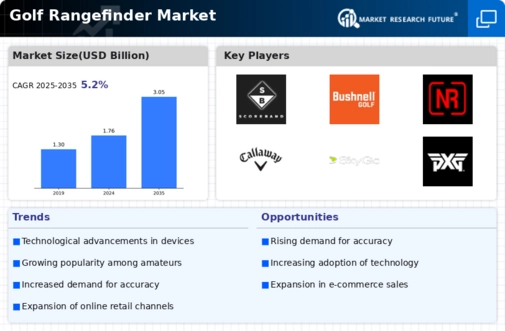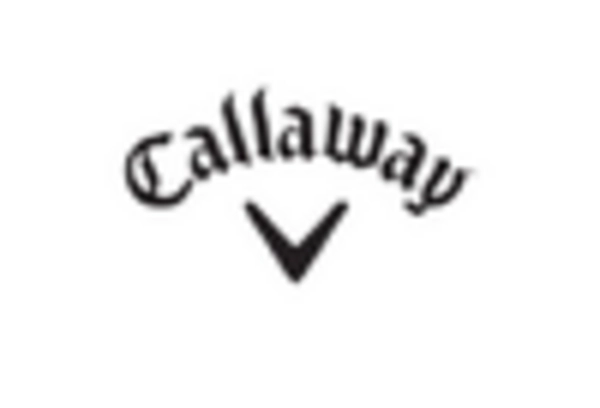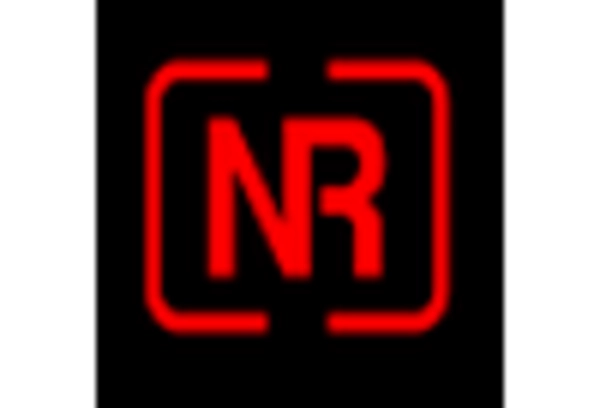Rising Popularity of Golf
The Golf Rangefinder Market is benefiting from the rising popularity of golf as a recreational activity. As more individuals take up the sport, the demand for equipment, including rangefinders, is likely to increase. Recent statistics suggest that golf participation rates have risen by 15 percent in various regions, indicating a robust interest in the game. This growing demographic includes younger players who are more inclined to utilize technology to enhance their performance. Consequently, the Golf Rangefinder Market is poised for growth as manufacturers respond to this influx of new golfers seeking reliable and efficient tools to improve their skills.
Technological Advancements
The Golf Rangefinder Market is experiencing a surge in technological advancements that enhance user experience and accuracy. Innovations such as GPS integration, laser technology, and smartphone connectivity are becoming increasingly prevalent. These advancements allow golfers to obtain precise distance measurements, improving their game strategy. According to recent data, the adoption of GPS-enabled rangefinders has increased by approximately 30 percent over the past year. This trend indicates a growing consumer preference for high-tech solutions in the Golf Rangefinder Market, as players seek tools that provide real-time data and analytics. Furthermore, the integration of augmented reality features is anticipated to attract tech-savvy golfers, potentially expanding the market further.
Growing E-commerce Platforms
The Golf Rangefinder Market is witnessing a shift towards e-commerce platforms, which are becoming a primary channel for purchasing golf equipment. The convenience of online shopping, coupled with the ability to compare products and prices, appeals to a broad audience. Recent data shows that online sales of golf equipment, including rangefinders, have increased by 25 percent in the last year. This trend suggests that consumers are increasingly comfortable making purchases online, which may lead to a broader market reach for manufacturers. As e-commerce continues to grow, the Golf Rangefinder Market is likely to benefit from enhanced visibility and accessibility to a wider range of customers.
Emerging Markets and Demographics
The Golf Rangefinder Market is expanding into emerging markets where golf is gaining traction. Countries with developing economies are witnessing a rise in golf courses and participation rates, creating new opportunities for rangefinder manufacturers. Additionally, demographic shifts, such as an increase in disposable income among middle-class consumers, are likely to drive demand for golf equipment. Market analysis indicates that regions such as Asia and South America are becoming increasingly important for the Golf Rangefinder Market. As these markets mature, the potential for growth in rangefinder sales appears promising, suggesting a dynamic shift in the global landscape of golf equipment.
Increased Focus on Performance Improvement
In the Golf Rangefinder Market, there is an increased focus on performance improvement among golfers of all skill levels. Players are increasingly aware of the importance of accurate distance measurement in achieving better scores. This awareness drives demand for high-quality rangefinders that offer precision and reliability. Market data indicates that approximately 60 percent of golfers consider rangefinders essential for their practice and play. As a result, manufacturers are investing in research and development to create advanced models that cater to this performance-driven market. The emphasis on performance enhancement is likely to sustain growth in the Golf Rangefinder Market as players seek to gain a competitive edge.

















Leave a Comment